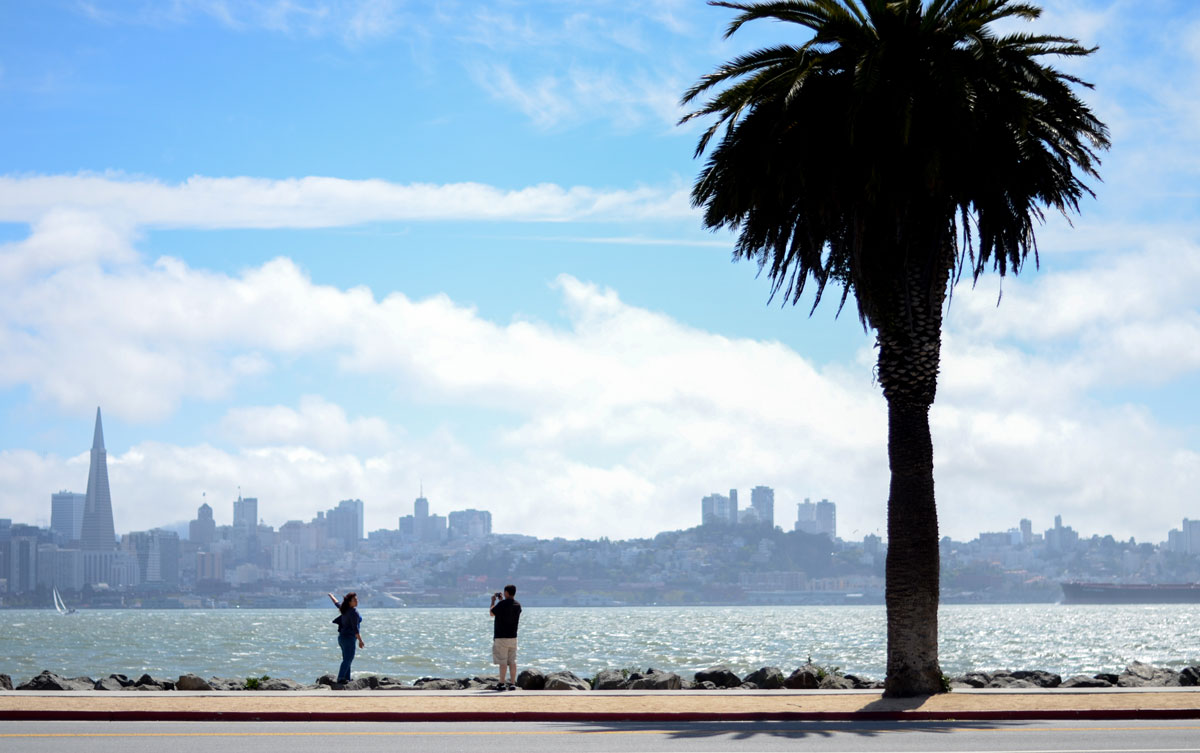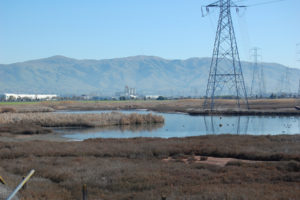ike every body of water that opens onto a global ocean, San Francisco Bay is virtually guaranteed to rise several feet in coming decades, climate scientists say. But that has not deterred real estate developers from proposing and building billions of dollars worth of new homes and offices in bayfront areas that current climate change predictions show could flood by century’s end.”
So begins an excellent story posted this week by Kevin Stark, Michael Stoll, and Winifred Bird at the San Francisco Public Press. Based on more than eight months of reporting, the story details the Bay Area’s high risk under most sea-level rise scenarios — and the difficulties local and regional agencies have had in planning for the future. Read the full report at http://sfpublicpress.org/searise
We talked to Kevin Stark by phone this morning to ask him about the challenges of thinking about, and reporting on, sea level rise in the Bay Area.
Eric Simons: Why sea level rise?
Kevin Stark: It was a simple question, as it always is. Michael Stoll wanted to do a forward looking piece. A lot of stories we’d both read were static or retrospective: how is sea level rise going to affect our communities as they are now? Instead we wanted to look at what was being built, and how is sea level rise going to impact what’s actually under construction? What are we doing now that in the future we’ll have to do some costly, expensive fix? Are we building ourselves into a box?
ES: What reporting challenges came up?
KS: This is interesting. There really needs to be some type of regional solution for the Bay, because if San Francisco builds a giant seawall it’s protected but the water gets pushed elsewhere. There needs to be collaboration. But that extends to the way cities are collecting data about building. Every city has a different way of collecting and storing data about where they’re building. Within the data there’s ranges of accessibility, it comes out in all different formats. There’s a difficulty in getting uniform information. And in the same way there’s a need for regional collaboration in dealing with sea level rise, there needs to be regional collaboration in collecting and storing our data.
ES: Was there anywhere that stood out as either particularly prepared or particularly unprepared?
KS: I’d point to the work Emily Dugdale did, looking at a few different cities and how prepared they are. I would say most cities are taking steps, to varying degrees of expedience. San Francisco for example has done a pretty amazing deep dive into the science, has come up with some useful inundation maps and what projections to use, and how to translate projections into policy. That’s the conversation that’s happening: How do we translate these projections into actionable policy? While those conversations are happening, there’s also a lot of construction that’s happening. The two figures I was thinking about last night are the roughly $20 billion in projects that we identified — that’s probably not near the total that’s being built — and then the Pacific Institute did a study on what would be the cost of protecting the Bay, just for infrastructure currently in place, and it was roughly $60 billion. You think about those two numbers and it’s kind of staggering.
ES: One of the really interesting things I saw was Mayor Ed Lee’s line about needing more research — that, essentially, it will be easier for future generations to deal with sea level rise because the exact height will be more specific. Did you hear that line a lot?
KS: I think the biggest thing you hear when you talk to activists who’ve been working on this is institutional inertia. It’s politicians who have a four-year election cycle dealing with a 50-to-100 year problem. People are angry about housing and any of the day to day issues they’re dealing with directly, and it’s hard to get people active about climate change because it’s a slow burning process.
ES: Tell me a little bit about yourself: You’ve been at the Public Press for six years, and you’re headed to the Medill School of Journalism (at Northwestern) in the fall?
KS: I started with the Public Press before there was a print edition. I worked on the first project, which was the city budget watchdog, right when I first moved to San Francisco. Which was an incredible way to move to the city. The Public Press is such an amazing organization, and I’ve watched it grow — when we first published stories, we’d put them on the web site and who knows where it would go, because we were building a readership. Now I feel like we’ve carved out a space.
I’m going to be doing a one-year master’s program, and also got a Comer Scholarship to do environmental reporting. I want to keep doing climate change work, and I’m really interested in sea level rise. This project could be picked up and put into other cities. So I’ll continue to follow up.
Visit sfpublicpress.org/searise for the story, as well as accompanying articles, graphics, photos and maps that appear in the summer 2015 print edition of the San Francisco Public Press. Find out where to buy a copy or order online at sfpr.es/buypaper





